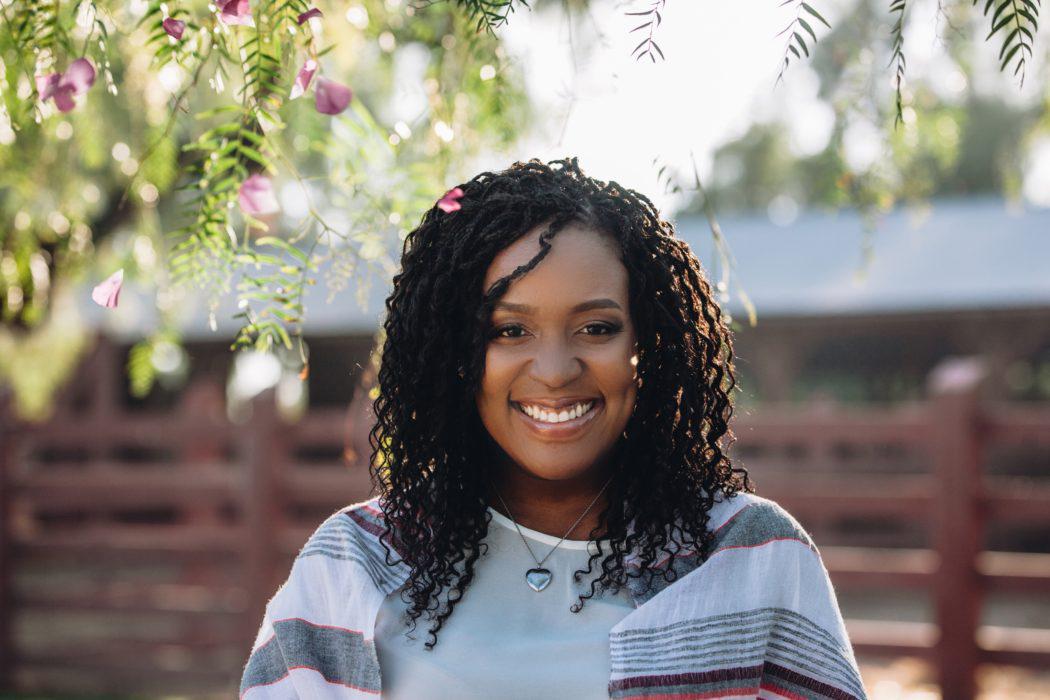
Thérèse Cator, Trauma-Informed Embodiment Practitioner, Leadership Coach, and founder of Embodied … [+]
Until we are able to create tools that allow us to travel in time, we cannot go back and right the wrongs of our past. The popular saying says that hindsight is 20/20; but does a world and specifically a country that is marred with racial scars have the hindsight to heal and repair? The backlash against the teaching of Black history, critical race theory, and the banning of books like Beloved would say no. We are still struggling towards the point of understanding—we don’t have the hindsight yet to fully conceive the ways that racism impacts every structure and system that we exist within. What does the process of healing look like for individuals and communities? Thérèse Cator is a trauma-informed embodiment practitioner who specializes in helping people develop a connection to their bodies that promotes wellness and healing. Cator’s work provides an intersectional and decolonial lens that is rare in an “overwhelming white, ableist and self-centered” somatics field. Cator sat down with Forbes to share more about her work and how we, as a society, can move towards a place of greater wellness and healing.
Janice Gassam Asare: I would love for you to share a little bit more about yourself for the Forbes readers who may not be familiar with you.
Thérèse Cator: I’m Thérèse Cator. My pronouns are she/her/hers. And I’m an embodiment practitioner. I’m also a leadership coach, and I’m the founder of Embodied Black Girl. I do a lot of things, so I mix everything together. I weave everything together into the work, and it’s really about helping Black folks and women of color heal from intergenerational pain and trauma and assessing their sense of aliveness. And I feel like the work also influences anyone, no matter what their background is, because my work also is rooted in social change…so uprooting white supremacy.
Asare: How do you feel like one can go about…healing from the intergenerational trauma that is experienced, especially as Black people…think of the intergenerational trauma that is held within the bodies of Black Americans and descendants of enslaved people. How do you feel like we can go about beginning the process of healing?
Cator: Yeah, that’s such a great question because the thing is, I feel like our ancestors and our bodies are the blueprint, right? So instead of looking outside of ourselves, I think it’s really about embodiment and turning within. And embodiment, essentially, it means being in your body. And we’re all embodied in one way, shape, or another. But the question is, are we embodying liberation? Are we embodying our wholeness? Are we embodying our healing? And that’s what we want to orient towards and start to embody those things. So, to me, I feel like it’s really coming back to our bodies and colonialism, supremacy, it’s created disembodiment, right? It’s created disconnection, and embodiment is about accessing our innate sense of aliveness.
Asare: I love that. And so how do you think that the body can help facilitate that healing process? Are there specific practices that you think we should engage in and how does the work that you do center around ways that our bodies can actually facilitate that healing?
MORE FOR YOU
Cator: First thing, I would say what everyone can do is just notice what’s going on in your body. Even if we just take a breath and like, ‘what’s going on in my body right now? Oh, is my breath a little bit shallow? Am I not breathing? Do I feel my feet? Can I feel my hands? Is there warmth? Is there coldness?’ Just those tiny things are markers to tell us how we’re feeling. It tells us what state we’re in. One of the things that I talk a lot about is the neurobiological state of our automatic nervous system. Not to get too scientific, but what state are we in? Are we in fight? Are we in flight? For Black folks especially, in America, we’re in constant attack, in many ways.
There’s a constant hypervigilance and that hypervigilance, we see it resulting in morbidities for Black folks…Black women having higher rates of cancer and high blood pressure and so forth and so forth. So, there’s a direct correlation to really being in the state of hypervigilance that’s sending cortisol throughout our bodies, opposed to oxytocin, right, where we’re in a more calm, soothed state. Obviously, depending on the situation we’re in, we might have to have a higher sense of vigilance. But to have that all the time, that is what causes issues within our bodies. So, it’s really about…how can we get back to that state of balance?
So, practices that we can use are movement-based, are performance speech, which I have a background in both of those, meditation, breath work, learning more about the biology, our nervous systems, where are we in our nervous systems…our self-regulation, our co-regulation, our attachment. And really, I think the foundation of all this work is coming and doing this work in community. So not doing it individually because, as you talked about the harm, intergenerational harm, that happened, that happened with other people. It didn’t happen like I’m in my own silo. It happened with other people, so in order for us to heal, it also involves other people and coming into community.
Asare: I love that idea…about how healing may come in the form of being in community with others. I know that you probably really enjoy, as I do, the book My Grandmother’s Hands. And I know that in that book, Resmaa [Menakem] spoke to this idea of not just those who are the most harmed healing, but also those who inflicted the harm healing from the harm that was done by their ancestors. How do you feel like we heal or we can heal within our communities, especially for those navigating the harm and the trauma that they experience in the workplace? How do you feel like community healing can take place, and what can that look like?
Cator: Yeah…I love Resmaa’s book. He’s one of my teachers, love him, love his work. And yeah, so I think number one, it’s really getting honest about the shadows. I mean, we’re having this conversation, I don’t know, it’s November. It’s Scorpio season. So, to me, it’s all about the shadows. I’m a Scorpio, so it’s like diving into the depths. So, number one, if we’re not talking about it, if we can’t talk about it, we can’t heal from it. So, there’s a lot of elephants in the room, pink elephants in the room, that people [say], ‘oh no, let’s not look at that.’ Or even the way that we see that they don’t want to teach about race and racism in schools throughout the country…it’s like not looking at it, we already know what happens when we don’t look at things, right?
If we ignore something in our bodies, like if I have a broken leg, if I ignore it, eventually I won’t be able to walk, right? So, I think the first step is not ignoring it. And the second step is everyone, depending on how they identify, their race, and all the other identities, need to realize there’s some healing work that needs to be done separately. So white folks confronting and uprooting white supremacy needs to be done in their specific container without inflicting harm on Black, brown, Indigenous people. And as we’re doing the work, there are times that, yeah, we can come together and do some work together, but it’s like we have to first do our individual work. And I feel like, for folks of color bodies, what Resmaa actually calls bodies of culture, we need our spaces to be able to do the work, our own healing work.
Asare: Do you want to share more information about free workshop offerings and resources for folks who are inspired by this interview and want to reach out to you or enlist you for your services?
Cator: Yeah, for sure. We’re going to be doing an embodied healing container, specifically for Black folks only. And it’s just going to be diving more into the neurobiology aspect, but also integrating ancestral wisdom as well. Because embodiment is not just like, ‘oh, okay, we’re learning about the body.’ I think there is a spiritual aspect, but that spiritual is not dogmatic. It’s really coming from within. It’s really always going back within, so that we can regulate our own nervous systems. And then there’s also the collective nervous system too. So, as we’re regulating our nervous systems, we’re also impacting and regulating the collective nervous system as well.
This interview has been lightly edited for clarity and brevity.







